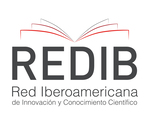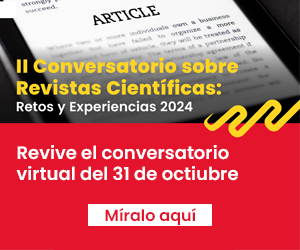Estimation of the number of pigeons (Columba livia) in two urban areas of Metropolitan Lima through the application of point count methods and strip transects
DOI:
https://doi.org/10.20453/stv.v11i2.5135Keywords:
Columba livia, pigeons, census, control methodsAbstract
The study’s objective was to estimate the number of pigeons (Columba livia) in two urban spaces in the metropolitan area of Lima by applying point count methods and strip transects. For this purpose, two parks were chosen, one in the district of Los Olivos and the other in Comas. The park’s area was measured and divided into point counts and strip transects. The evaluation of each method was conducted three times a day for six days. Data were summarized using descriptive statistics, and contrasts were made using the Mann-Whitney U test and Kruskal Wallis. The census methods provided statistically comparable results. The point count method allowed a detailed evaluation of the association with pigeon habitat and elucidation of why pigeons cluster in a particular study area. On the other hand, the strip transect method allowed obtaining the information in a shorter time. The information from the study allows us to have a reference of the initial population in both parks, establishing measures to evaluate the control methods of the municipalities to reduce the population of these birds.
Downloads
References
Bolduc, F., & Fifield, D. A. (2017). Seabirds at-sea surveys: the line-transect method outperforms the point-transect alternative. The Open Ornithology Journal, 10(1), 42-52. http://dx.doi.org/10.2174/1874453201710010042
Cabalceta, A. y Barrientos, Z. (2019). Tradición: una nueva razón para alimentar las palomas urbanas (Columba livia; columbiformes: Columbidae), y cómo controlarlas de manera sostenible. UNED Research Journal. 11(3), 2216-2225. https://www.redalyc.org/articulo.oa?id=515663493014
Ferman, L. M., Peter, H.-U., & Montalti, D. (2010). A study of feral pigeon Columba livia var in urban and suburban areas in the city of Jena Germany. Arxius de Miscel·lània Zoològica, 8, 1-8. https://doi.org/10.32800/amz.2010.08.0001
Gibbs, D., Barnes, E., & Cox, J. (2010). Pigeons and Doves: A Guide to the Pigeons and Doves of the World. Christopher Helm Publishers.
Giunchi, D., Albores-Barajas Y. V., Baldaccini, N. E., Vanni, L., & Soldatini, C. (2012). Feral pigeons: problems, dynamics and control methods. En S. Soloneski (ed), Integrated pest management and pest control: current and future tactics (pp. 215-240). InTech. https://doi.org/10.5772/31536
Haag-Wackernagel, D., & Bircher, A. J. (2010). Ectoparasites from feral pigeons affecting humans. Dermatology, 220(1), 89-92. https://doi.org/10.1159/000266039
Méndez, V. M., Villamil, L. C., Buitrago, D. A., Soler, D. (2013). La paloma (Columba livia) en la transmisión de enfermedades de importancia en salud pública. Revista Ciencia Animal, (6), 177-194. https://ciencia.lasalle.edu.co/ca/vol1/iss6/13/
Mondocorre, W., Pérez, F., Albis, N. y Zeballos, M. (2014). Estimación de la abundancia de palomas (Columba livia) y percepción de la ciudadanía, para su control y manejo en la ciudad de Sucre. En M. Ramos (ed.), Ciencias tecnológicas y agrarias. Tomo II. Handbook. https://handbook.usfx.bo/nueva/Dicyt/Handbooks/Ciencias%20Tecnol%F3gicas%20y%20Agrarias_2/Ciencias%20Tecnol%F3gicas%20y%20Agrarias_Handbook_Vol%20II/PAPERS_25/art1.pdf
Ralph, C. J., Geupel, G. R., Pyle, P., Martin, T. E., DeSante, D. F. y Milá, B. (1996). Manual de métodos de campo para el monitoreo de aves terrestres. U. S. Department of Agriculture. https://www.birdpop.org/docs/pubs/Ralph_et_al_1996_Manual_de_Metodos_Para_El_Monitoreo_De_Aves.pdf
Ramos-Gorbeña, J. C., Jerí-San Miguel, I. R. y Villar-Mondalgo, J. R. (2021). La paloma (Columba livia Gmelin, 1789): biología, deterioro estructural y principales enfermedades zoonóticas. Biotempo, 18(2), 235-252. https://doi.org/10.31381/biotempo.v18i2.4093
Redondo, J. M., Ibarra, D. y Rojas, A. Y. V. (2018). Modelamiento del control de población de palomas (Columba-livia) en la Plaza de Bolívar de Bogotá. Revista Lasallista de Investigación, 15(1), 8-15. https://doi.org/10.22507/rli.v15n1a1
Rocha e Silva, R. C., Maciel, W., Teixeira, R., & Salles, R. S. (2014). O pombo (Columba livia) como agente carreador de Salmonella spp. e as implicações em saúde pública. Arquivos do Instituto Biológico, 81(2), 189-194. https://doi.org/10.1590/1808-1657000702012
Santos, H. M., Tsai, C.-Y., Catulin, G. E. M., Trangia, K. C. G., Tayo, L. L., Liu, H.-J., & Chuang, K. P. (2020). Common bacterial, viral and parasitic diseases in pigeons (Columba livia): a review of diagnostic and treatment strategies. Veterinary Microbiology, 247, 108779. https://doi.org/10.1016/j.vetmic.2020.108779
Senar, J. C., Montalvo, T., Pascual, J., & Peracho, V. (2017). Reducing the availability of food to control feral pigeons: changes in population size and composition. Pest Management Science, 73(2), 313-317. https://doi.org/10.1002/ps.4272
Soto, C. y Acosta, I. (2010). Prevención y enfermedades de la paloma doméstica. Revista Electrónica de Veterinaria, 11(11), 5-79.
Spennemann, D. H. R., Pike, M., & Watson, M. J. (2017). Effects of acid pigeon excreta on building conservation. International Journal of Building Pathology and Adaptation, 35(1), 2-15. https://doi.org/10.1108/IJBPA-09-2016-0023
Stock, B., & Haag-Wackernagel, D. (2014). Effectiveness of gel repellents on feral pigeons. Animals, 4(1), 1-15. https://doi.org/10.3390%2Fani4010001
Suárez-García, O., González-García, F. y Celis-Murillo, A. (2017). Entendiendo la complementariedad de dos métodos de muestreo en el estudio de comunidades de aves de un bosque mesófilo de montaña en temporada reproductiva. Revista Mexicana de Biodiversidad, 88(4), 880-887. https://doi.org/10.1016/j.rmb.2017.10.029
Vasconcelos, R., Teixeira, R. S., Silva, I. N., Lopes, E., & Maciel, W. (2018). Feral pigeons (Columba livia) as potential reservoirs of Salmonella sp. and Escherichia coli. Arquivos do Instituto Biológico, 85, e0412017. https://doi.org/10.1590/1808-1657000412017
Zúñiga, E. P., León, D. y Falcón, N. (2017). Plagas urbanas: la paloma y su impacto sobre el ambiente y la salud pública. MV Revista de Ciencias Veterinarias, 33(1), 5-12. https://www.urp.edu.pe/pdf/id/2615/n/revista-cv.-felipe.-n-1.2017-1.pdf
Downloads
Published
How to Cite
Issue
Section
License
All articles published in Salud y Tecnología Veterinaria are under a Creative Commons Reconocimiento 4.0 International license.
The authors retain the copyright and grant the journal the right of first publication, with the work registered with the Creative Commons License, which allows third parties to use what is published whenever they mention the authorship of the work, and to the first publication in this magazine.
Authors can make other independent and additional contractual agreements for the non-exclusive distribution of the version published in this journal, provided they clearly indicate that the work was published in this journal.
The authors can file in the repository of their institution:
The research work or thesis of degree from which the published article derives.
The pre-print version: the version prior to peer review.
The Post-print version: final version after peer review.
The definitive version or final version created by the publisher for publication.












